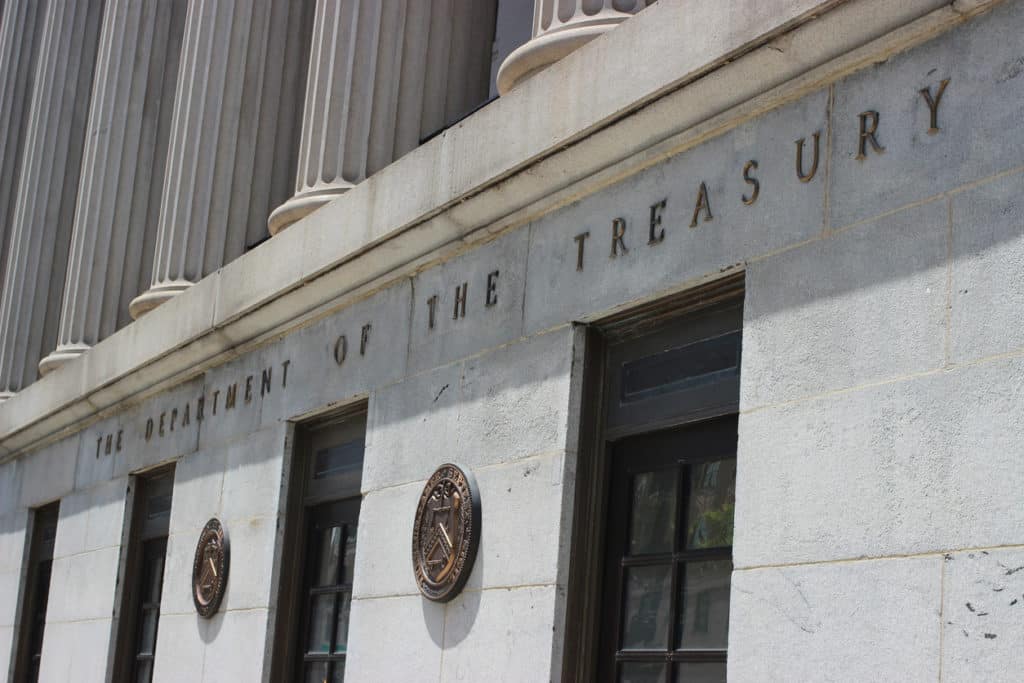

The US SEC adopted a final rule that amends the definitions of securities “dealer” and “government securities dealer” that will require certain hedge funds and, potentially, advisers to register as dealers or government securities dealers if they meet one of two qualitative standards.
Commenting on the US SEC rulemaking, Jack Inglis, AIMA CEO, said:
“The US SEC has incorrectly concluded that customers of dealers, including certain AIMA members, may be dealers themselves – a clear departure from the statutory definition and understanding of what it has meant to be a securities ‘dealer’ for the past 90 years.
Although the Commission did not adopt some problematic aspects that were included in the proposed rule, the final rule may nonetheless capture certain funds and strategies and therefore subject them to potential registration as a dealer and government securities dealer. AIMA will review the final rule text and assess next steps.”
Source: AIMA
Bryan Corbett, President and CEO of the MFA, issued the following statement regarding the SEC finalizing its Dealer Rule:
“The SEC’s final Dealer Rule is a significant improvement from the proposal and provides recognition that regulating alternative asset managers as dealers will harm markets and the broader economy. MFA will continue to review the final rule to assess if our members’ investment activities are harmed by the Commission’s dealer definition. Alternative asset managers are not dealers, and MFA is concerned that the Rule may not go far enough in excluding them and private funds from being regulated as dealers.”
Source: MFA
Today's final rule from the SEC on the definition of a "dealer" cements an unworkable rule and is a setback for innovation in the digital asset ecosystem.
In May 2022, we outlined our concerns to the SEC: https://t.co/bvTqb65Pfe
Our Head of Legal @MTCoppel on today's rule: pic.twitter.com/5G7RKkBWkZ
— Blockchain Association (@BlockchainAssn) February 6, 2024
Good summary of the SEC’s broker dealer rule.
My take is this rule will have its primary impact on tradfi (especially algo trading prop firms), but the rule probably won’t survive judicial review under the APA in most circuits. Maybe SEC should sue itself to pick venue? https://t.co/WDUISWKChH
— Justin Slaughter (@JBSDC) February 7, 2024
2/ These adopted rules require market participants who provide significant liquidity to the markets (and have $50 mill or more in assets) to comply with federal securities laws (e.g., registering as a dealer), including when transacting in crypto securities (which the SEC…
— Ji Kim (@_jikim) February 6, 2024
4/ (Of course the question still remains what, if any, crypto assets are securities? This is guidance CCI and the broader industry has been seeking to no avail.) As one example, the expanded definition might now include the automated and algorithmic trading technology to execute…
— Ji Kim (@_jikim) February 6, 2024
6/ “The rule covers providers of liquidity in crypto asset securities. Not only do the tired questions about when a crypto asset is a security remain, but the rule raises new questions about how the rule will apply in the context of automated market makers (“AMMs”). For example,…
— Ji Kim (@_jikim) February 6, 2024
8/ At a time when the digital assets industry needs clarity, this rule delivers further confusion. And this despite the industry repeatedly seeking to engage constructively and in good faith with the SEC through comments and dialogue. Our system of government requires better.
— Ji Kim (@_jikim) February 6, 2024
Dissenting Statement from Commissioner Hester M. Peirce
Dealer, No Dealer?[1] : Statement on Further Definition of “As a Part of a Regular Business” in the Definition of Dealer and Government Securities Dealer in Connection with Certain Liquidity Providers
hank you, Mr. Chair. I cannot support the final rule. Even though streamlined substantially,[2] it perpetuates the proposal’s fundamental flaw. The rule defines dealer in a way that is inconsistent with the statutory framework within which it sits and will distort market behavior and degrade market quality.
This rule turns traders, many of whom are customers, into dealers. Doing so runs counter to the statute, as the Commission and market participants have read it for decades. The Exchange Act defines a dealer as a person that is “engaged in the business of buying and selling securities” for its “own account through a broker or otherwise,” but—importantly—excludes “a person that buys or sells securities . . . for [its] own account, either individually or in a fiduciary capacity, but not as a part of a regular business.”[3] Nearly any firm in the financial markets that trades securities as a principal does so “as part of a regular business.” Recognizing the breadth of this language read out of context, the Commission has long appropriately interpreted this provision in a way that distinguishes between market participants that operate a dealing business and those that operate an investing and trading business.[4] To this end, the Commission and Commission staff repeatedly have issued guidance on what we have called the dealer-trader distinction.[5]
The rule the Commission is considering today obliterates this distinction by extending the definition of “dealer” to market participants that run investing and trading businesses, not dealing businesses. Rather than looking to whether the “regular business” of the firm bears the hallmarks of dealing activity,[6] today’s rule would capture any person whose “regular business” involves trading activity for its own account that provides liquidity on a more than “incidental” basis.[7] Although the Commission and its staff have previously stated that liquidity provision may be indicative of dealing activity, it has not to my knowledge ever before stated categorically that liquidity provision alone by a person trading for its own account constitutes dealing activity or that trading activity becomes dealing activity merely because it has the effect of providing liquidity.[8]
And for good reason: Once liquidity provision—not in the form of a service provided to market participants but as an effect of one’s trading activity—turns a person into a dealer, the dealer-trader distinction becomes unintelligible. The rule itself demonstrates this: The statutory trader exception is no longer sufficient to exclude registered investment companies from the dealer definition; the final rule is so broad that the Commission has determined that it needed to expressly exclude these investment funds. The express regulatory exclusion for investment companies suggests that the Commission believes that the statutory exception for traders is insufficient to exclude entities that almost no one has conceived could be dealers, that likely could not operate under broker-dealer regulations, and for which Congress has established an entirely different statutory framework. Such a narrow reading of the statutory exception is clearly a misreading of the statute. The upheaval wrought by the rule’s singular focus on liquidity provision creates uncertainty about dealer status for many market participants who rely on the trader exception.[9] Perhaps recognizing this, the Commission only briefly touches on the dealer-trader distinction in the release, conveniently avoids proffering any explanation for departing from the prior understanding of that exception, and instead asserts that the rule is “intended to reflect the longstanding [dealer-trader] distinction.”[10]
The express regulatory exclusion avoids creating absurd results for registered investment companies, but the rule still produces absurdities. The adopting release acknowledges that the market participants that will be forced to register under the final rule may not have any characteristics of dealers under the current rule.[11] Instead, simply executing any of a number of common trading, investing, and risk management strategies could turn a market participant into a dealer if doing so happens to provide significant liquidity to the market. Not only will these entities be subject to a dealer regulatory regime that does not make sense for them,[12] but they will lose the protections now afforded to them as customers.[13]
In addition to harming the market participants who find themselves transformed into dealers, this rule harms the broader market. It penalizes liquidity provision, which means there will be less of it. The penalty comes in the form of a costly and ill-fitting regulatory regime for liquidity-providing market participants. For playing this important role, principal trading firms, private funds, and other market participants swept up by the rule will now have to “register with the Commission and become members of an SRO; [and] comply with Commission and SRO rules, including certain financial responsibility and risk management rules, transaction and other reporting requirements, operational integrity rules, and books and records requirements.”[14] They also have to become members of the Securities Investor Protection Corporation (“SIPC”). When serving the markets comes with such onerous and unsuitable regulatory requirements, some market participants will decide to stop the activities that give rise to the positive liquidity provision externality. The Commission is attempting to solve the problem of inadequate liquidity provision in times of crisis by reducing liquidity provision ex ante. How this advances the Commission’s objective of shoring up liquidity provision is beyond me.[15]
The Commission casts this rule as part of an effort to protect competition,[16] but the rule will drive competitors out of the markets. By penalizing trading and investing strategies that have the effect of providing liquidity to the markets, the rule will dampen liquidity provision. The extra costs will cause firms to consolidate so that they can spread the fixed costs of the dealer regulatory regime over more activity. Small and mid-size participants that enhance the diversity and robustness of the ranks of liquidity providers will disappear, and liquidity providers will become more concentrated and more homogenous, which will make both these firms and the market more fragile.
The Commission contends that this rule is necessary to give us “more comprehensive regulatory oversight of securities markets.”[17] The SEC commonly falls back on this justification for rulemaking, but being an effective regulator does not require comprehensive surveillance and a prescriptive regulatory regime governing the activities of every market participant. In any case, we already have lots of data to conduct regulatory oversight: the Consolidated Audit Trail’s comprehensive monitoring of the equity and options markets, the ever-expanding Form PF to collect granular private fund data, the Trade Reporting and Compliance Engine (“TRACE”), large trader reporting, data arising from mandatory proprietary trader registration with FINRA, and the list goes on.[18] A regulator’s temptation may be to put every corner of the market under a regulatory spotlight and into a regulatory straitjacket, but a clear-eyed view takes into account the costs of such “comprehensive oversight” to the healthy, dynamic functioning of the market and the investors and issuers that participate in it.
In addition to these fundamental flaws, the new rule comes with other problems, including serious implementation challenges. The rule is ambiguous in scope, which almost certainly will bring in firms the Commission has given no thought to including.[19] These firms will incur significant costs in registering as dealers or changing their businesses so they do not have to register. The implementation period is too short, particularly given the involvement of both FINRA and SIPC.[20] The likely interactions with other rules are unpredictable. And, not surprisingly, the rule reflects little thought regarding its practical application in the crypto markets.[21]
Thank you to the staff in the Division of Trading and Markets, the Division of Economic and Risk Analysis, and the Office of General Counsel for your work on this release. You continue to impress me with your diligence and concern for the well-being of our markets. I know that the work will not stop with today’s adoption, but will continue through implementation, so thank you in advance for that.
I have a number of questions:
- For DERA, the economic analysis acknowledges that the rule’s consequences are difficult to predict.[22]
- What metrics do we plan to use to measure the positive and negative consequences of this rule in a retrospective review several years from now?
- What could we see that would suggest the rule was a success?
- Will we be able to measure whether the rule has harmed liquidity provision?
- The decision not to scope out private funds and pension funds is puzzling given the ill-fitting nature of dealer rules on funds.
- What is the logic for excluding registered investment companies, but not private funds and pension funds, which are also pooled investment vehicles?
- How many private funds and pension funds do you anticipate will be pulled into dealer registration by these new amendments?
- Will a private fund or pension fund that has to register as a dealer under the rule face any unique challenges? For example, a private fund’s liquidity rights for investors could conflict with the net capital rule, or assessing applicability of the rule that pursues multiple independent trading strategies might have to coordinate trading in violation of the fund’s policies and procedures.
- How will the relationship of a private fund or a pension fund with its broker-dealers change so as to diminish customer protections if the fund has to register as a dealer?
- The Release explains that a crypto automated market maker might have to register as a dealer under the final rules. How can a software protocol register as a dealer?
- What will the Commission do to work with FINRA and SIPC to ensure that all new dealers swept up by the rule will be able to be onboarded within the one-year compliance period?
- The final rule does not exclude investment advisers, as some commenters had hoped.
- Why would it make sense for an investment adviser, which is already subject to a regulatory framework, to register as a dealer, and would doing so present any challenges to carrying out the adviser’s fiduciary duties?
- If an adviser provides seed capital for a strategy that triggers the new dealer definition, would the adviser have to register? If so, why does that make sense?
Source: SEC
Statement On Final Rules Regarding The Further Definition Of A Dealer-Trader, SEC Chair Gary Gensler, February 6, 2024
The Commission is considering whether to adopt final rules further defining a dealer and government securities dealer. I am pleased to support this adoption because it requires that firms that act like dealers register with the Commission as dealers, thereby protecting investors as well as promoting market integrity, resiliency, and transparency.
The registration, oversight, and regulatory regime for dealers is a cornerstone of the federal securities laws. It was amongst the first authorities that Congress gave the SEC as part of the Securities Exchange Act of 1934.
When dealers register, they become subject to a variety of important laws and rules that help protect the public, promote market integrity, and facilitate capital formation. Amongst these are meeting minimum capital requirements, reporting data to regulators, and keeping books and records. This regime benefits investors, issuers, and markets alike—and has done so for nearly 90 years.
Congress, though, in crafting the foundational securities laws from the 1930s had exempted Treasury securities—and thus government securities dealers—from these key provisions.
This all changed in the 1980s, in response to a dozen firms in the Treasury markets that had failed between 1982 and 1985. I actually recall vividly the failures of some of those firms. I was a young associate on Wall Street, and though I worked in the mergers and acquisitions department at the time, far from the trading floor, the news spread far and fast when Drysdale Government Securities failed in May of 1982.
I remember as my colleagues and I processed what had happened as well as its potential effects on the markets and potentially the economy. Drysdale, which was not registered or regulated as a dealer, had significant involvement in the U.S. Treasury markets. It also was highly leveraged. The firm had only $30 million in capital yet managed a portfolio as large potentially as $4 billion.[1]
In the ensuing years, it seemed like every couple of months, another unregulated government securities firm would collapse. These included E.S.M. Government Securities and others, none of which were regulated as securities dealers.
In response, President Ronald Reagan signed the Government Securities Act into law in 1986. The Act granted the SEC and other regulators important authorities to regulate dealers and brokers in this space.
Working with the SEC, the U.S. Department of Treasury put in place rules for government securities dealers. Yet in 2021, when I arrived at the SEC, I was told that though numerous firms have registered with the SEC as government securities dealers, some market participants have not. I think that leaves potential regulatory gaps and risk in the system.
The markets also have evolved in other ways, such as electronification, the use of algorithmic trading, and market participants transacting faster than ever before. Some market participants, such as principal-trading firms (PTFs) that use high-frequency trading strategies, started participating significantly in the Treasury cash market. In 2019, for example, PTFs represented around 60 percent of the volume on the inter-dealer broker (IDB) platforms in the Treasury markets.[2]
In essence, these PTFs and other firms are acting in a manner consistent with dealers in the securities markets. Nevertheless, despite these firms acting as de facto market makers, and despite their regularity of participation consistent with buying and selling securities or government securities “as a part of a regular business,” a number of these firms have not registered with the Commission as dealers.
This deprives investors and the markets themselves of important protections—protections that benefit market integrity, resiliency, transparency, and more.
To fill this regulatory gap, today’s rules will further define what it means to be engaged in a business of buying and selling securities “as a part of a regular business.” They will do so for both dealers and government securities dealers by requiring entities engaging in “de facto market making” activity to register as dealers or government securities dealers.
Specifically, the rules further define “as a part of a regular business” to include “engag[ing] in a regular pattern of buying and selling securities,” or “government securities,” “that has the effect of providing liquidity to other market participants by”:
- “Regularly expressing trading interest that is at or near the best available prices on both sides of the market for the same security and that is communicated and represented in a way that makes it accessible to other market participants;” or
- “Earning revenue primarily from capturing bid-ask spreads, by buying at the bid and selling at the offer, or from capturing any incentives offered by trading venues to liquidity-supplying trading interest.”[3]
These measures are common sense. Congress did not intend for registration and regulatory requirements to apply to some dealers and not to others. Absent an exemption or exception, if anyone trades in a manner consistent with de facto market making, it must register with us as a dealer—consistent with Congress’s intent.
In finalizing this adoption, we benefitted from public feedback on our proposed rules and made a number of adjustments. Let me just note three. First, with regard to these qualitative standards, the final rules we are considering today do not include an additional qualitative factor that had been proposed with regard to a firm regularly making roughly comparable purchases and sales of the same or similar securities in a day. Second, the final rules do not include the proposed quantitative standard for the further definition of a dealer in the Treasury markets. Third, the final rules adopt an anti-evasion provision rather than the proposed aggregation across legal entities.
The final rules promote an important cornerstone of the SEC’s work to oversee the markets.
I’d like to thank the members of the SEC staff for their work on these final rules, including:
- Haoxiang Zhu, David Saltiel, Andrea Orr, Emily Westerberg Russell, John Fahey, Joanne Rutkowski, Shauna Sappington, Bonnie Gauch, Geeta Dhingra, Kate Lesker, Carl Emigholz, Randall Roy, Roni Bergoffen, Sharon Park, Kyle Druding, Yue Ding, Hughes Bates, and John Prochilo in the Division of Trading and Markets;
- Jessica Wachter, Oliver Richard, Amy Edwards, Gregory Allen, Kali Chowdury, Louis Craig, Joseph Otchin, Landon Ross, Lauren Moore, Charles Woodworth, Adam Yonce, and Jill Henderson in the Division of Economic and Risk Analysis;
- Megan Barbero, Laura Jarsulic, Meridith Mitchell, Robert Teply, Cynthia Ginsburg, Ronesha Butler, Emily Parise, Cathy Ahn, and Natalie Shioji in the Office of the General Counsel;
- William Birdthistle, Sarah ten Siethoff, Melissa Harke, Jen Porter, Alexis Palascak, and Adele Kittredge Murray in the Division of Investment Management;
- Samuel Waldon, Charlotte Buford, Laurie Stegman, Kerry Knowles, Jen Peltz, Ainsley Kerr, Mandy Sturmfelz, Joseph Sansone, Kristin Pauley, Scott Thompson, David Hirsch, and Jorge Tenreiroin the Division of Enforcement;
- Carrie O’Brien, Michael Hershaft, and Chris Mulligan in the Division of Examinations; and
- Valerie Szczepanik and Amy Starr in the Office of the Strategic Hub for Innovation and Financial Technology (FinHub).
Source: SEC






